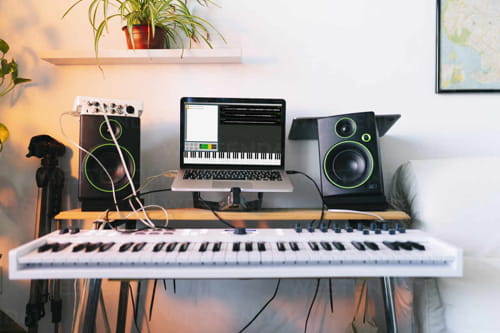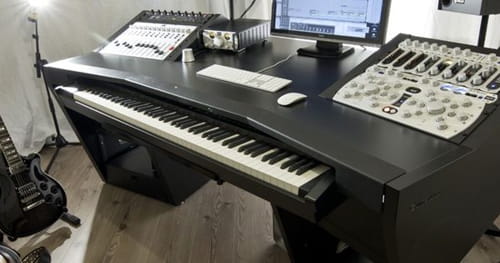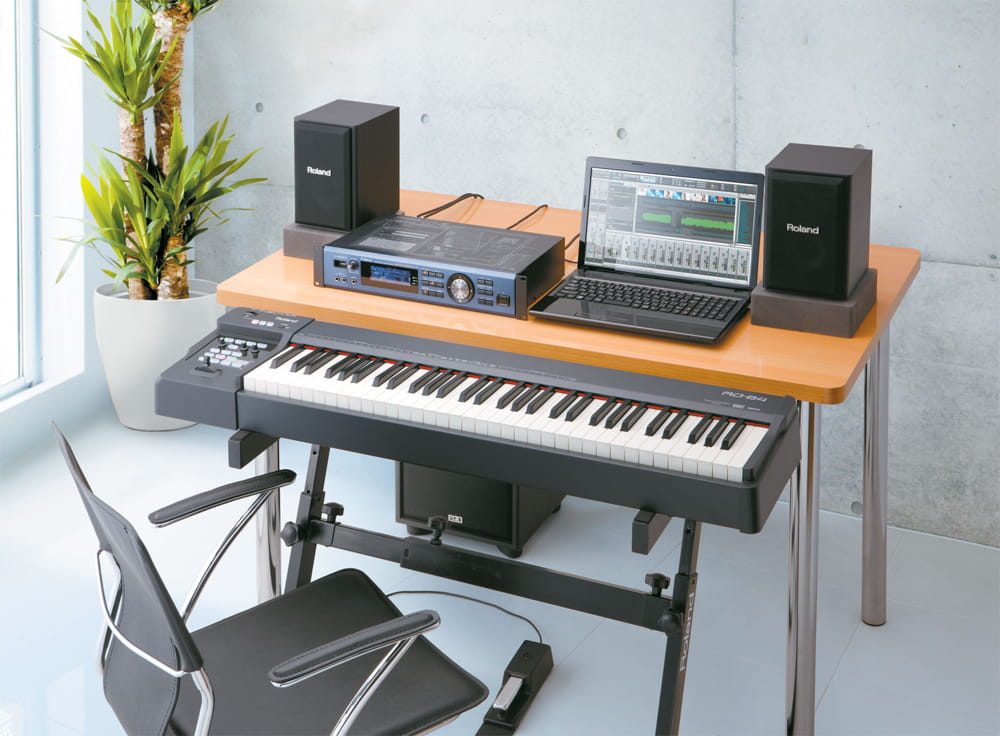If you’ve ever wanted to record your digital piano playing, you’ve probably wondered how to do so. You’ll need an audio interface, which transforms the sounds produced by the piano into a digital signal and transmits it to your computer. Then, you’ll need a recording device, which will require a USB connection. Once you’ve chosen a device audio interface, you’ll need to connect it to your digital pianos for midi recording and line outputs.
The first step in audio recording is to connect the instrument to your computer. Make sure the device has a USB-MIDI connection. The best digital pianos already have this option, while others only have USB audio outputs. If you don’t have one, you’ll need to buy one. The cost isn’t too high, so you can purchase one at a local music store or online.
Then, you can record your music on your digital audio workstation!
After connecting the recording device, plug it into the USB port on your computer. Now, you’re ready to begin recording. Plug your digital piano into the USB-MIDI jack on your recorder device. Then, turn on your digital piano. Next, play some notes on the keyboard and listen through the recorder device. This will give you an idea of what you sound like when recording. Now, you’re ready to start recording.
First, press the spacebar to open the recording software for decent recording. A window will appear asking for the name of your track. Enter “track 1” as the name. After that, you’ll be prompted to select a sampling rate to record vocals. We recommend 48000 Hz, but 44100 works well, too.
You’ll also need to specify the bit depth. By default, it will automatically detect your recorder device. However, if it doesn’t work correctly, you can manually enter the number of channels.
For example, if you’re using a stereo microphone, set it to 2. If you’re using multiple microphones, use 3 or 4. Finally, you’ll need to adjust the volume. Lowering the gain helps reduce noise. Experiment until you find the right balance between loudness and clarity for your recording methods for your sheet music.
Now, press the “record” button. The recording will begin immediately. Play a few more notes, then stop. After that, close the software and save your file.
You can now play back your recording. To do so, open the same recording software again. Select “playback mode.” Then, press the spacebar. A new window will appear asking for the name of your track. Enter “track 1” as the name. Press the spacebar again to advance to the next screen.
On the next screen, you’ll need to select a playback speed using a suitable software. The default setting is 0.5x. Try changing the value to 0.7x or even 1.0x. That should help improve the sound quality.
Next, you’ll need to adjust the volume. You can do so by pressing the up/down arrow keys. Increase the volume gradually until you get the best results.
Finally, press the “start” button. The recording will begin playing back. Adjust the volume as necessary, then stop.
Now, you’re ready to mix and master your song and record a digital piano recording!
Connecting Your Digital Piano to a Computer

To connect your digital piano to your computer, you’ll need to buy a cable. You can buy one at any electronics store or online. You can also use an existing keyboard cord, but it won’t produce the best sound. Plug the other end of the cord into the electronic piano. Now, plug the end of the cord into your computer. Then, plug the power adapter into your electronic piano. Lastly, plug the power adapter into your computer.
When you first connect your electronic piano to your computer, it will ask you to enter a password. Type the password in and press enter. This will allow you to transfer the settings of your electronic piano to your computer. After that, you can begin recording music directly to your computer.
That’s it for recording audio using a USB cable and midi ports using the internal microphone!
If you want to create music on your own, you can download free software from the internet. Many people also prefer to use third party software. They can record music directly to your computer. However, there are many disadvantages to using these programs. For example, they can cause damage to your electronic piano. Therefore, we recommend recording directly to a recorder device through an input device.
In addition, you’ll need to make sure your microphone is set to the correct input channel to exactly what you want. If you’re not sure, try adjusting the recording level. You can also experiment with different levels of compression. You can adjust the recording level in the recording software.
However, you’ll need to adjust it in your recorder device, too. Finally, you’ll need to adjust the volume. This can be done in the recording app or in the recorder device. Experiment until you find the perfect balance.
Also, remember that the quality of your actual sound depends on the quality of your microphone recording. The higher the mic’s sensitivity, the better the sound. However, the price increases exponentially. Therefore, you may need to compromise on quality on the audio recorder.
As you can see, recording your electronic piano is easy. It’s also very affordable. However, you’ll need to invest a little time to get the best sound for stereo output piano sound for your home recording studio.
How to Record Classical Music With Your Digital Piano

Classical music is a great way to learn about music theory. However, classical music is hard to record. You’ll need a good microphone, sound card and a lot of patience.
If you want to learn how to record classical music, here are a few things to keep in mind:
- First, choose the right microphone. For best results, you’ll need a condenser microphone or a built in mic. These microphones have a flat frequency response, which makes them ideal for recording music. They’re also small enough to fit in your pocket.
- Next, adjust the recording level. As a piano player, you can adjust the recording level in your recording app for your piano tune. However, you’ll need to adjust it in your recorder device, too. Experiment until you find the perfect balance.
- Finally, adjust the volume. This can be done in the recording app or in the recorder device. Experiment until you find the perfect balance in audio signals.
Conclusion

Recording electronic piano is easy using the midi interface. However, it takes practice. Luckily, you don’t need expensive equipment to do it. You can easily record the sound with just a laptop, a USB record midi connection, and a USB audio connection.

